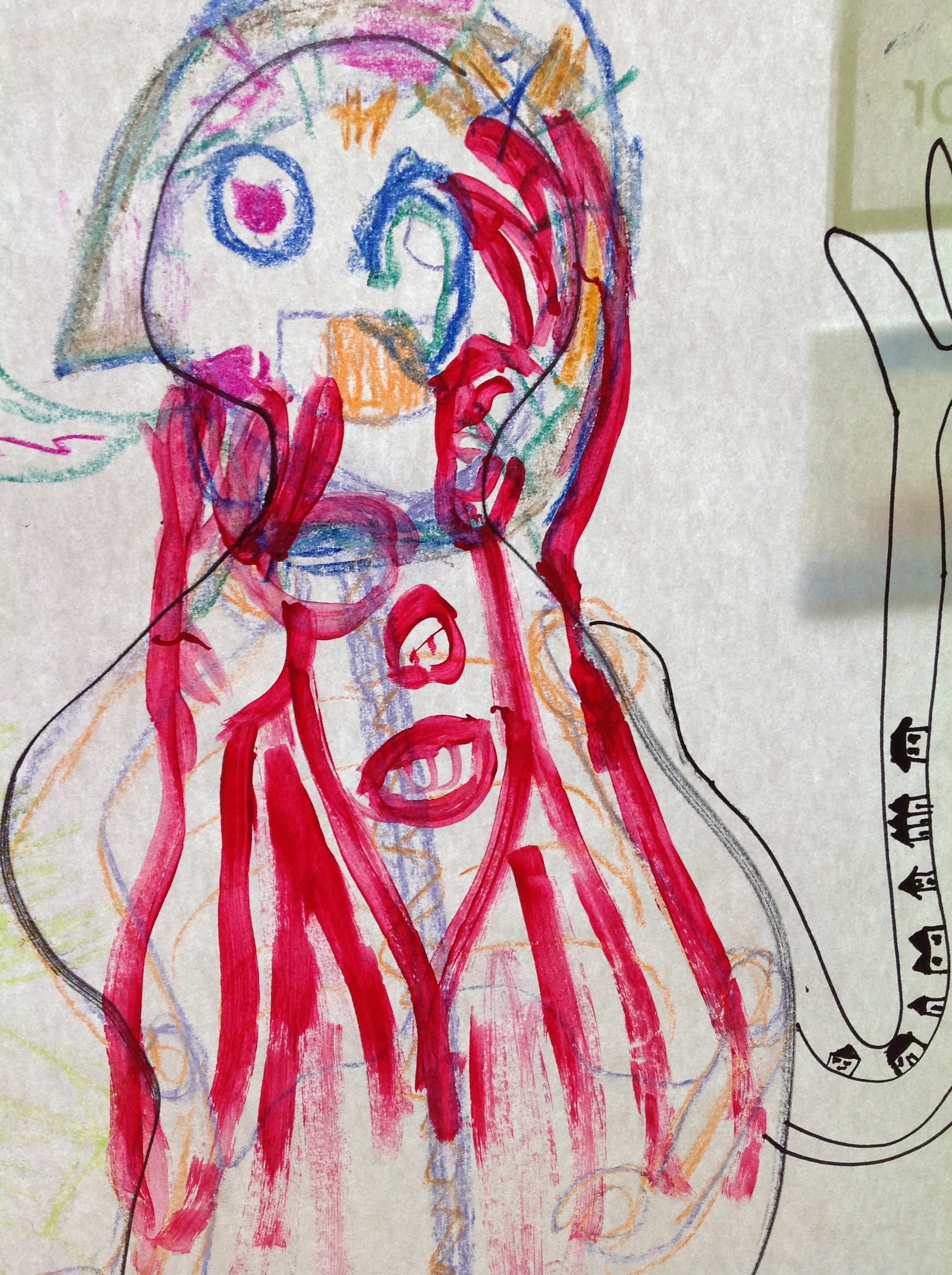Junanne Peck, a wonderful Ft. Worth printmaker who is co-teaching summer art camp with me again, is sending more pictures and I'll post some more later. I always seem to forget to shoot images when I am deep into the flow of these events. She brought wood to carve, encaustic hot plate and more -- plus her own ideas and participatory genius. Junanne is an AKUA inks demo artist.
If you want to be part of the next El Cielo experience, here's the schedule as it stands now:
The Huipil Reimagined
Feb. 27-March 1 and repeating May 1-3
El Cielo Studio, Pipe Creek
Weekend retreat with optional Friday night potluck.
Participants will design and print fabrics and other textiles, construct a simple garment based on the traditional huipil of Mayan and other indigenous women of Latin America, reinterpreting the story telling and cultural identity of the garment as a personal work of art. We’ll be doing a variety of surface design techniques, stitching, fabric collage, photo transfers and more. $200 includes most supplies. Accommodations on site. REPEATS May 1 - 3.
IPad Art Studio
Monthly
Each month I'll be hosting a guided iPad tablet creativity studio session at the Cabin in San Antonio, 539 Senisa, near Woodlawn Lake. These sessions, limited to 7 participants each session, will allow for individual consultation, critique, technical problem solving, app recommendations and more as you work on your own iPad, digital and print projects, including eBooks, collage work, Spoonflower digital print designs, photo editing, photo books, etc. When you sign up, send me an email with what you hope to accomplish so I can prepare a bit! Or just call at the last minute and see if there is space available. Each 4 hour block of time (you can stay as long or short a time as you wish) runs from 12 noon to 4 pm on the third Monday of each month. The cost for this guide-on-the-side and personal coaching is just $40 per session. February 16, March 16, and April 20. No reservation fee, but do send an email if you can!
iPad Art Basics
Friday, January 30
The best art, editing and organization apps to start with -- and a world of tips and tricks that will take you from FB or reading on the tablet to a whole lot more -- digital printing, improving photos, making simple (and complex) photo collages and start-up sketching tools. This is a simplified version of the iPad Art Adventure that I have been teaching (by request from folks who thought that one would be too advanced!) This 6 hour workshop includes several chapters of my soon-to-be-published eBook on the subject to take home for further study.. 9:30 am to 2:30 pm with a lunch break (bring your own or walk down the block for soup or tacos). 539 Senisa near Woodlawn Lake. Fee, including supplies other than app purchases: $80
iPad Painting and Drawing
Friday, March 27
The best apps for sketchbooks, travel journals, drawing and “painting” explored in depth with both demo and projects to work on during the workshop (including art prints using an inkjet printer). Bring an assortment of photos that you like, and take still life shots at the workshop then transform them with a variety of apps in a personalized workflow. This 6 hour workshop includes more chapters from my soon-to-be-published eBook to take home for further study. 9:30 am to 2:30 pm with a lunch break (bring your own or walk down the block for soup or tacos). 539 Senisa near Woodlawn Lake. Fee, including supplies other than app purchases: $80
Shape to Symbol to Stamp to Scarves
Saturday, March 28
9:00 am - 3:00 pm
Invent a personal logo or symbol after playing around with shape designs and experiments. Move from there to carving, cutting and stenciling on silk with fabric friendly inks and paints to make a personal statement in your attire this summer. You’ll explore creative combination, personal imagery and composition — and even a bit of up-to-date woodcarving and AKUA soy-based printing inks. Fee, including most supplies: $80
iPad Collage and Digital Design for Fabric Online Printing
Thursday, April 30, 9:30-3:30
San Antonio
Experiment with some of the wonderful collage apps on the iPad — cut and paste (virtually), as well as layering, grid designs and free form combining of art images, preexisting and new shape collections, famous art image vocabularies, and more. We’ll also do a walk-through on how to take an idea from iPad to Spoonflower, on the iPad and/or your laptop. $80 fee. App list sent ahead of time.



















































